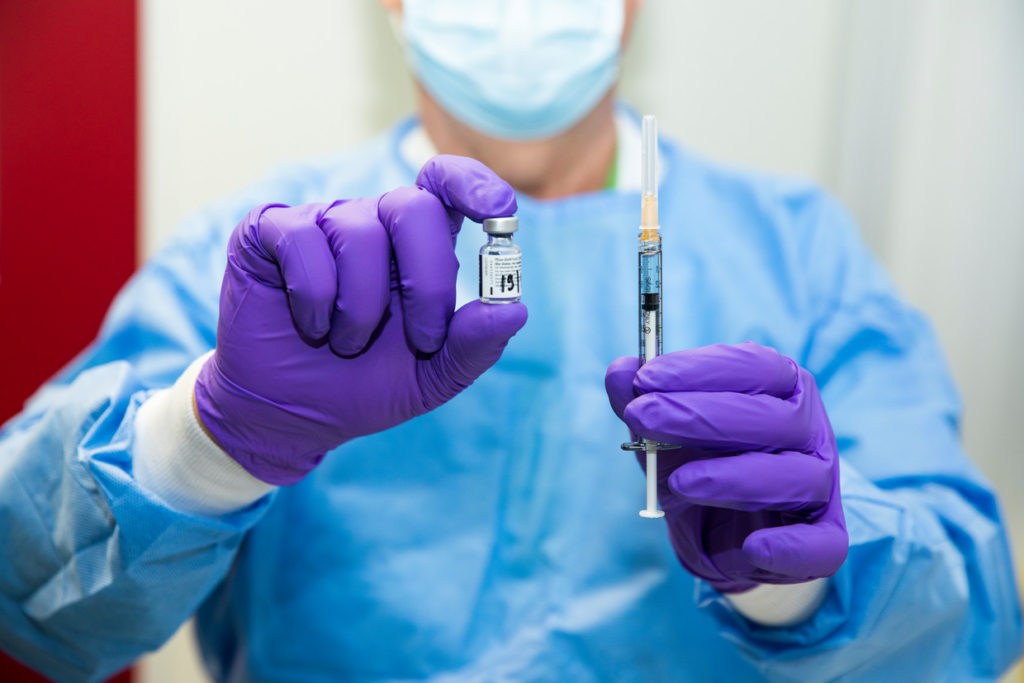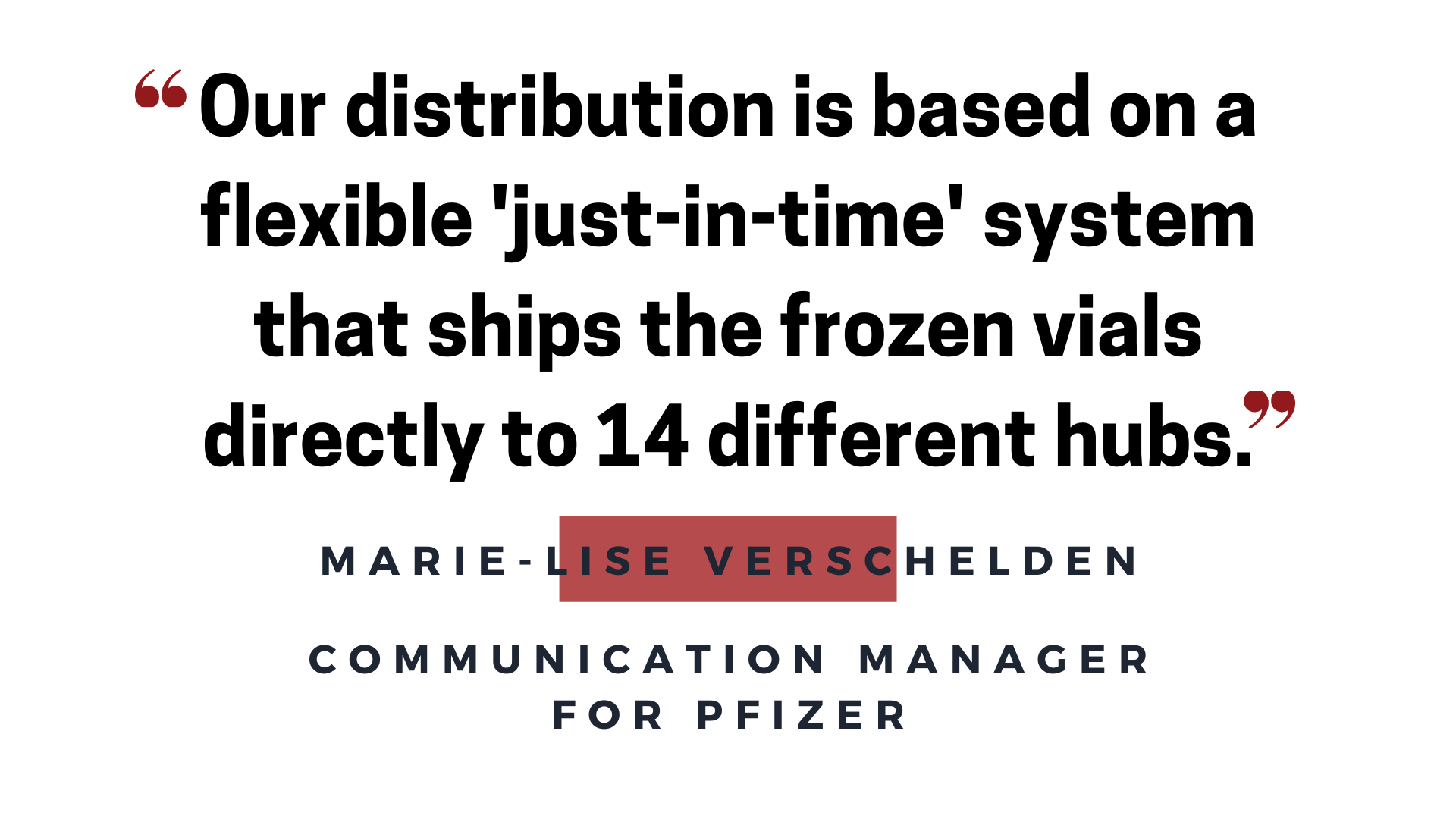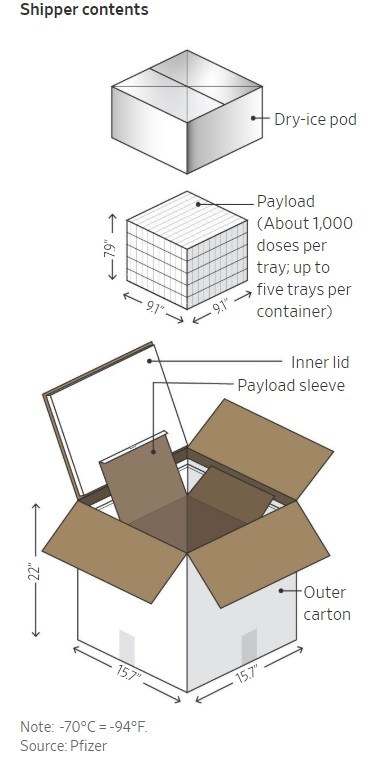In the days since Pfizer/BioNTech's received official approval for the first coronavirus vaccine in the EU, the company has kicked off campaigns across the Union.
In May, the Pfizer vaccine is expected to give an extra boost to Belgium's vaccination campaign thanks to the early arrival of 1.28 million doses from the company's factory in Puurs in the Antwerp province.
So, how does it get to you?
Getting There 'Just In Time'
"We have developed detailed logistics plans and tools to support effective transportation, storage and continuous temperature monitoring of vaccines," Marie-Lise Verschelden, Communication Manager for Pfizer, told The Brussels Times.
"Our distribution is based on a flexible 'just-in-time' system that ships the frozen vials directly to 14 different hubs that were designated by the governments," she added.
These designated hubs are currently large hospitals, such as the Erasmus hospital in Brussels, because they are the only facilities with the right equipment to store the frozen vials.
During transport, the vaccines are kept at -70°C using specially designed, temperature-controlled "thermal shipper" boxes that use dry ice to maintain the recommended storage conditions.
These boxes contain up to five trays, each holding about 1,000 vaccine doses and a dry ice pod to keep the temperature sufficiently low.
"We use GPS-enabled thermal sensors in each thermal shipper, with a control tower that tracks the location and temperature of each vaccine shipment along their pre-programmed routes," Verschelden added.
Once the vaccines reach the hub, the ones that are not used immediately can be stored in ultra-low temperature freezers (for up to six months), regular freezers (for up to two weeks), or the thermal boxes in which they arrived.
"Those boxes can be used as temporary storage units for up to 30 days, if the dry ice is replaced every five days," said Verschelden.
From hubs to vaccination centres
Once the vaccines arrive in one of the hospitals designated as hubs, they are distributed over each hub's vaccination points, where the shots will be administered, such as residential care centres and vaccination centres, Verschelden added.
Vaccines are first thawed at the hospital the day before they are set to be administered. Once taken out of the freezer, they have to be kept at 2-8°C degrees during their journey to the different vaccination centres and used within five days.
As soon as they arrive at a centre, they are put in the fridge again, where they remain until they are ready to be administered.
Before that can happen, however, there is one last step: the solution has to be diluted. Each vial has to be mixed with 1.8 ml of sodium chloride by a doctor or nurse at the vaccination centres.
Related News
- Dozens need third Pfizer vaccination after receiving too-low first dose
- Pfizer will start vaccinating family members of its staff directly
- Around 900,000 vaccines expected in Belgium next week
According to the Centre for Disease Control and Prevention, the vial has to be inverted about ten times to make sure both substances are mixed well.
If done right, six full doses can be pulled from a vial, using a very narrow needle.
However, if the liquid is diluted too much, as happened in a vaccination centre in Flemish Brabant on 10 April, the shot will contain too little vaccine, which means people need a third jab.
Once everything is mixed correctly, the shot can be administered to people's upper arm, which only takes a few seconds. After that, vaccinated people have to wait in the centre for another 15 minutes to make sure no immediate side-effects occur.
While Pfizer initially said that the second dose of its vaccine should be given no later than 21 days (three weeks) after the first one, Belgium's Superior Health Council has since decided that the interval between shots could be extended to 35 days (five weeks).
Maïthé Chini
The Brussels Times



